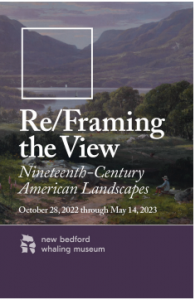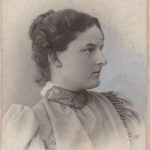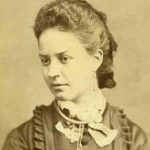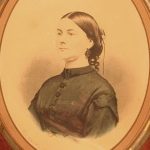Re/Framing the View: Nineteenth-century American Landscapes
is a special exhibition on display at the New Bedford Whaling Museum
through May 14, 2023.
Nineteenth-century American artists are well known for their depictions of nature and the outdoors, for their commitment to creating a national “school” of painting, and for their documentation and idealization of scenery ranging from the imagined and pastoral to the dramatic and sublime. The exhibition celebrates the work of these artists and offers an important layered interpretation of the cultural and historical meaning of such paintings. What such artists often failed to capture are the environmental conditions and social concerns that may underlie picturesque imagery.
There are a number of female artists featured in the exhibition, and several of those women are profiled here on the Lighting the Way website. Those profiles are:
Mercy Etta Baker
Mercy Etta Baker (1876-1957) painted the Westport landscape, its dunes, and natural beauty. She was also a prolific poet published locally, nationally, and internationally. Read the profile.
Theodosia Chase
Theodosia Chase (1875-1972) was a librarian, photographer, illustrator, and painter. In 1927, she opened her own studio on Hamilton Street behind the New Bedford Whaling Museum where she sold sketches, paintings, and postcards. Read the profile.
Frances Eliot Gifford
New Bedford artist Frances Eliot Gifford (1844-1931) was recognized as an accomplished illustrator and celebrated for her representations of birds both alone and in landscapes. Read the profile.
Elizabeth Marble
Elizabeth Wrightington Marble (1825-1894) proved her mettle by joining her husband Captain John Marble on two whaling voyages – the Kathleen (1857-1860) and the Awashonks (1860-1862) out of New Bedford. Read the profile.
Emily Noyes Vanderpoel
A color theory pioneer, artist, collector and philanthropist, Emily Noyes Vanderpoel (1842-1939) wrote the 1902 book Color Problems: A Practical Manual for the Lay Student of Color. Read the profile.
Check back as more artists will be added to this list!
To learn more about Re/Framing the View: Nineteenth-Century American Landscapes and to visit the Whaling Museum go to www.WhalingMuseum.org






